Cover photo by Simon Markhof.
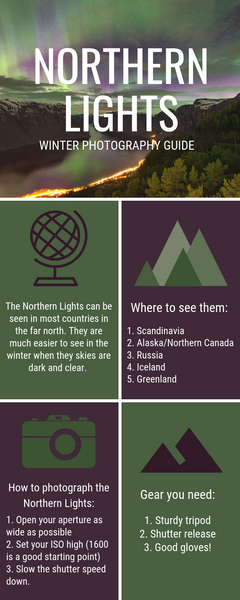
The Northern Lights are one of nature’s most spectacular displays of magic. You’ve surely seen the footage of green, blue and yellow lights streaming across the sky like some atmospheric dance party and if you’re anything like us, you were surely intrigued.
Also know as the Aurora Borealis, the Northern Lights are a scientific phenomenon that occurs when solar particles collide with gases in the atmosphere. The collision produces a neon light that can last for a few minutes or a few days.
When to see them:
Technically the Northern Lights are present year round but the chances of seeing them are much greater in winter when the air is cold and the skies are dark. The Aurora occurs well above the highest clouds so you’ll want a clear night in order to see the lights. You’ll also want to time your outing with a new moon if possible because the light from a full moon will wash out the bright colors from the lights.
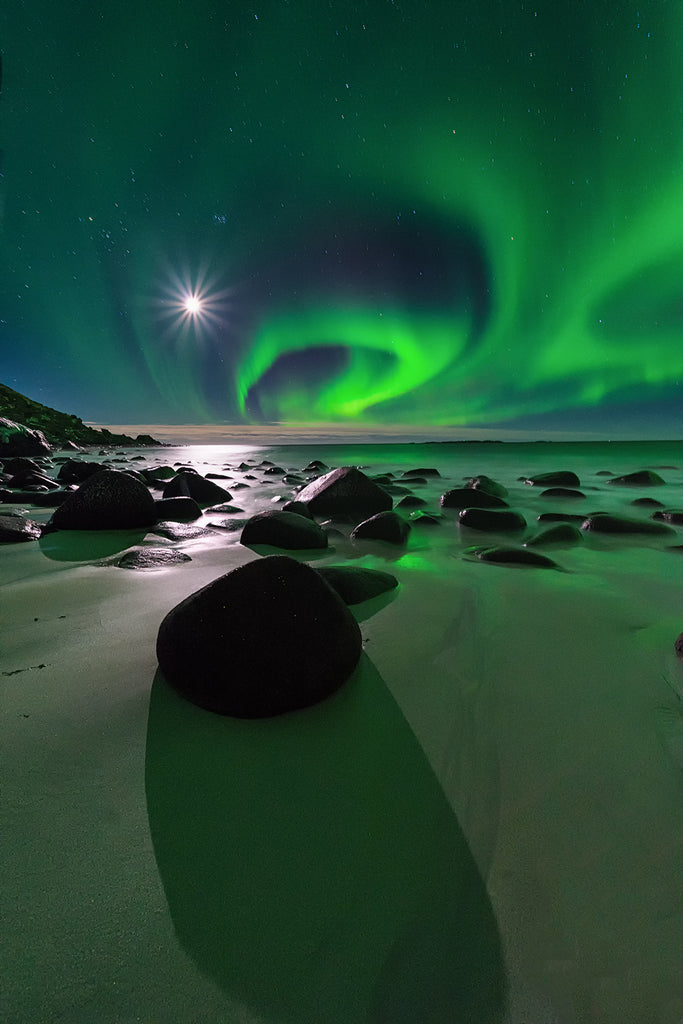
Northern Lights in Norway. Photo by Pedro Kin.
Where to see them:
Northern Lights can be found in the “aurora zone,” an area of 2,000-3,000km from the magnetic pole. The closer you are to this northern region, the better your chances of seeing the light show. Places in the far north like Scandinavia, Greenland, Iceland, Canada, Alaska, and Russia are great places to see the northern lights.
Northern Lights can be seen outside of the aurora zone but the likeliness decreased the farther from the zone you get.
Iceland: Iceland has become almost synonymous with Northern Lights. Virtually all of Iceland is privy to Northern Light viewings.
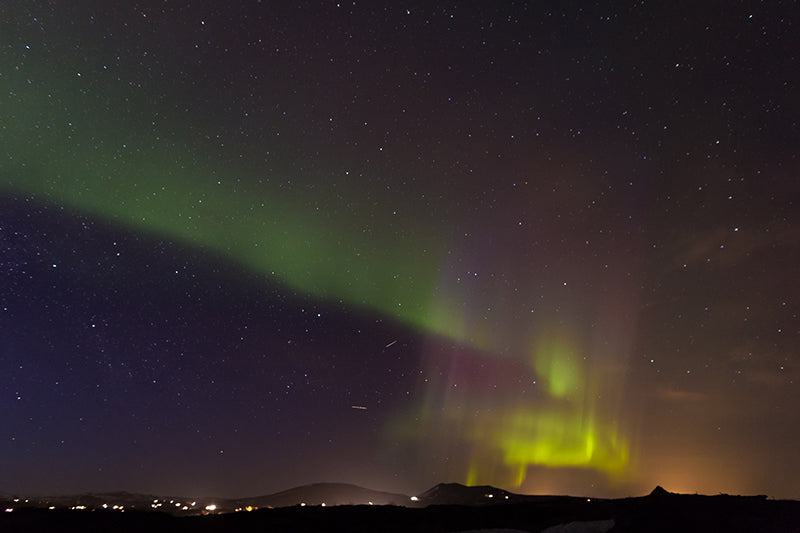
Photo by Blake Parker.
Greenland: Perhaps one of the least touristy areas to see the Northern Lights, Greenland is perfectly positioned to see the Auroras but visitors to this country will have to work for it. Greenland has no railways, no waterways and virtually no roads between towns. The main mode of transportation in winter is by dog sled so for those who want a bit of adventure, Greenland could be the perfect place for you.
Norway: Northern Norway provides great vistas for Northern Lights which dance above picturesque fishing villages and towering fjords. With its moderate winter temperatures due to its maritime climate, Norway is a popular choice for first time Aurora seekers.
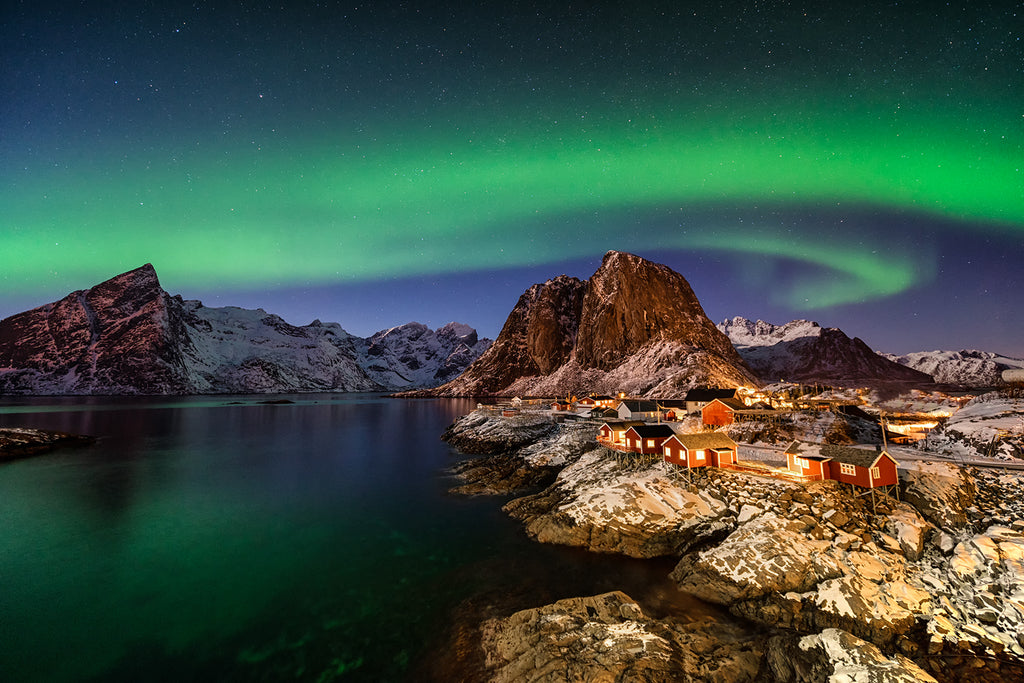
Photo by Pedro Kin.
Finland: In Finland, the Northern Lights take off nearly every other night making it a great location for Aurora hunters, however, the temperatures can be very cold in Finland meaning you’ll need extra layers to keep warm.
Sweden: Northern Sweden joins its Scandinavian neighbors as another great option for seeing the Northern Lights. Similar to Norway, its winter temperatures are not overly harsh making it a great place to sit and watch the sky.
Alaska, USA: Alaska is an excellent location to view the northern lights. Dark skies and cold weather make almost all of Alaska prone to Northern Light viewings.
Canada: Northern regions of Canada such as the Yukon and Northern territories are great spots to see the Aurora.
Russia: Much of northern Russia lies in the Arctic Circle making this region an excellent place to see the Auroras. The Kola Peninsula in the Murmansk region is the largest city in the world that lies beyond the Arctic Circle, making it a unique place to see the lights.
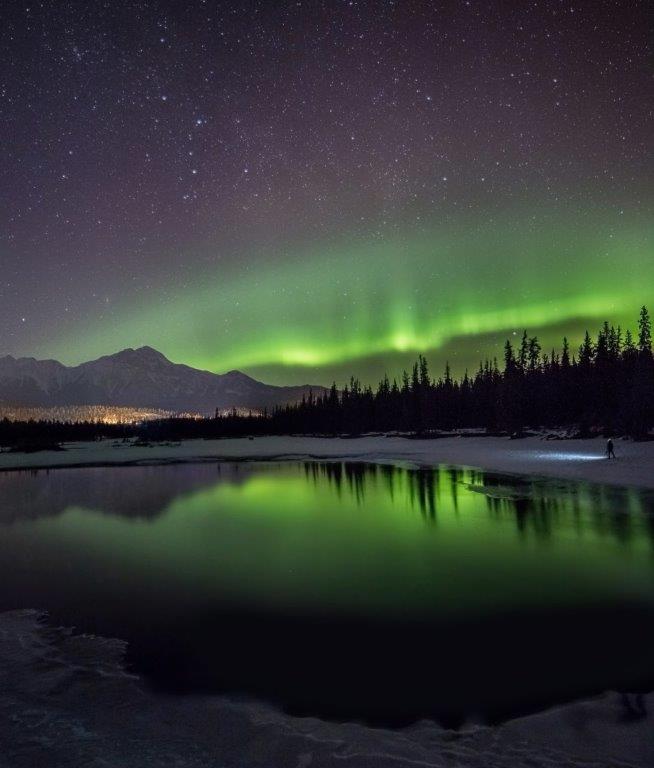
Photo by Dan Schykulski.
How to photograph them:
As with any night photography, you’ll want to be as far away from light pollution as possible. Getting out of the city and into a light-free zone will make the lights more visible. You’ll also want to pick a clear night with no cloud and minimal light from the moon.
You can’t miss the Northern lights when they are strong and the laser show is on, but often the Northern Lights are not visible to the human eye which is where being a photographer has its immense benefits. At the very least, you’ll want to have a sturdy tripod, a good lens with a wide aperture, and preferably a shutter release button to minimize any blur in the photo.
Getting your settings dialed will be the difference between an awesome Aurora photo and an average Aurora photo. You’ll want to start by ramping up your ISO as high as it will go without compromising the quality of your photo (1600 is a good start). Next, open up the aperture as wide as possible. An f/1.8 is preferable but even an f/4 can produce results. A wide aperture allows the most amount of light through your lens giving your camera the best chance of capturing the bright colours. Finally, you’ll need to slow your shutter speed. You can test different shutter speeds while out in the field or use these handy formulas below to determine the slowest shutter speed possible for your lens without creating star trails.
Take the number 500 (for full-frame sensors) or 300 (for crop sensors) and divide it by the focal length of your lens. This will give you the maximum shutter speed you can have while still keeping your image sharp.
14mm: 500/14 = 35 seconds (300/14 = 21 seconds)
16mm: 500/16 = 31 seconds (300/16 = 18 seconds)
20mm: 500/20 = 25 seconds (300/20 = 15 seconds)
24mm: 500/24 = 20 seconds (300/24 = 12 seconds)
Lastly, you’ll want to switch to manual focus and focus for infinity to get the stars and Aurora sharp. You can use your live view to manually focus on the brightest star which will help give you a sharp image.
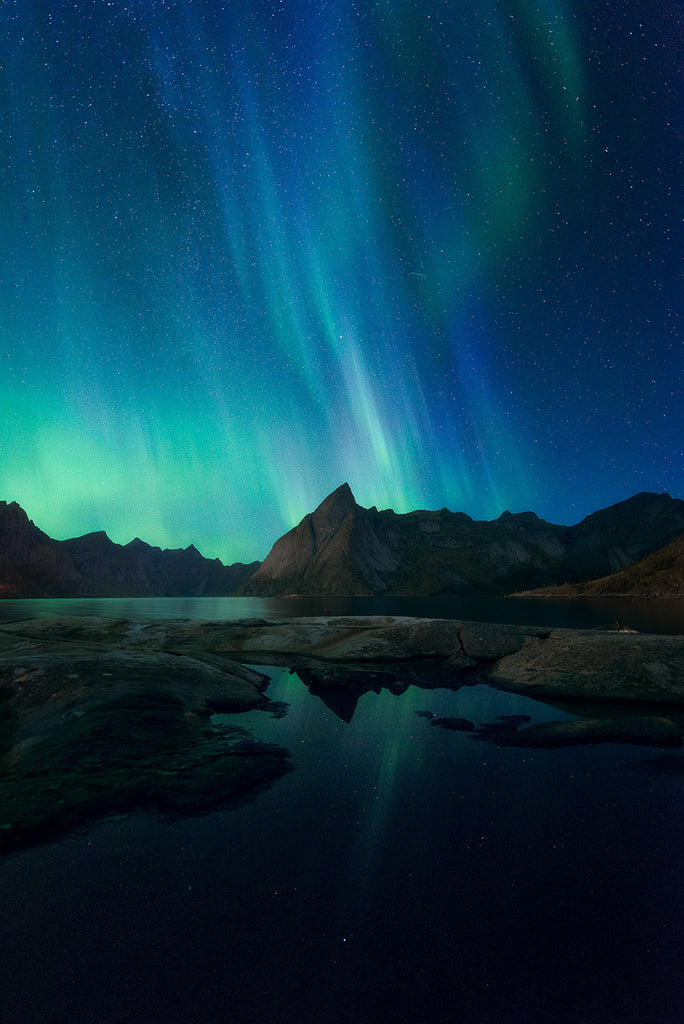
Northern Lights in Lofoten. Photo by Christian Hoiberg.
Can you see them in the Southern Hemisphere?
While not as well known as the Northern Lights, the same phenomenon occurs in the Southern Hemisphere as well. Known as the Aurora Australis, you can see the Southern Lights from Antarctica, southern New Zealand, South Georgia Island, Falkland Islands, and Ushuaia Argentina. There are clearly far fewer land locations that see the Southern Lights as compared to the Northern Lights so seeing the Aurora Australis is much rarer.
What to pack:
- Wide angle lens with wide aperture capabilities
- Extra batteries (at least double of what you’d normally take)
- No Filters — Leave these at home! Filters can distort how the light looks so best to take them off for your shots.
- Sturdy tripod
- Shutter release
- Laptop for post-processing
- Powerbank to charge batteries
- Power adapters
- 3-4 SD 64GB SD cards
- External hard drive to back up your photos
- Microfiber Cloths
- Photography gloves
- Waterproof jacket
- Insulating jacket
- Waterproof trousers
- Merino wool base layers
- Merino wool socks
- Warm winter boots
- Warm hat
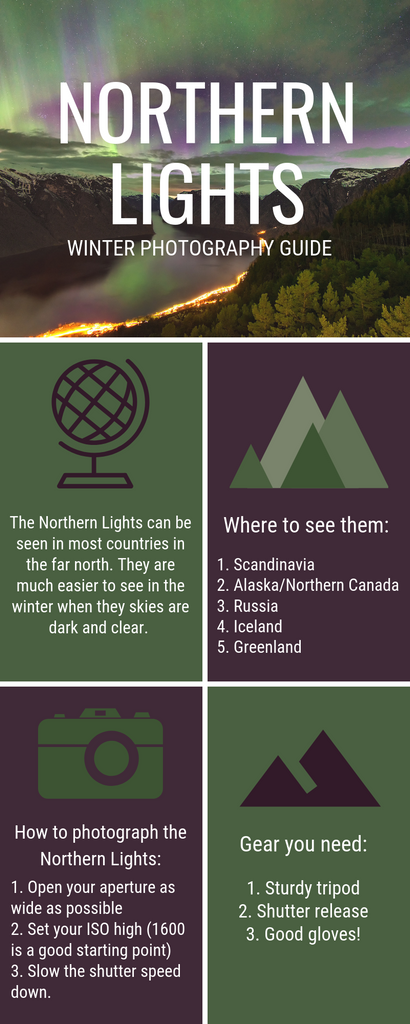
Why photographing the Northern Lights can be challenging:
The biggest challenge most photographers phase when attempting to photograph the Northern Lights is the unpredictability of the weather. Unfortunately, you need nearly crystal clear skies to produce good Northern Lights images and in most Arctic regions, this requires a good deal of patience and flexibility. You may spend your entire holiday waiting for a good night or you may get lucky and see them multiple times.
Why we love photographing the Northern Lights:
There's truly nothing like seeing the Northern Lights on full display and winter is the perfect time to capture them. Sure, the nights might be a bit chilly but with the right gear and proper layers, you can stay quite comfortable while you photograph and because of the shorter days, you can easily get your shot well before bedtime. Because there's no "one" spot to see the lights, you can really pick the location that works best for you without compromising on seeing nature's greatest light show.
If you enjoyed this article, you'll love these posts too!
-
Northern Lights Photography – 8 Tips from the Night guys.
-
How to Shoot the Northern Lights
-
Go get your dream (shot)!
Winter is no joke! Keep warm and shop our range of Vallerret Photography Gloves.
Special thanks to Christian Hoiberg, Pedro Kin, Simon Markhof, Blake Parker and Dan Schykulski for their photo contributions.





